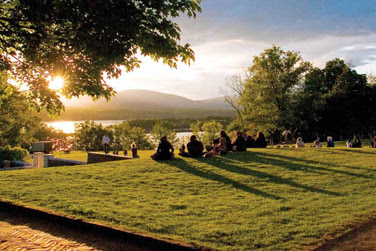 |
| The legendary building on U St. where Ellington's band "The Duke's Serenaders" had their first gig |
In the early 1900s, there was a large migration of blacks coming from the south to the D.C-Maryland-Virginia area in search of racial equality. While the political conditions in the north were certainly better than the ones they'd left behind, even in the nation's capital there was still overt segregation. Black Washingtonians used music to cope with the prejudice.
The Southwest part of the city roared with ragtime in the early 20th century. By the 1920s, there were wild dance parties every night of the week overflowing with bootlegged booze and Jazz bands. This was Duke Ellington's training ground.
As a teenager, he convinced Washington band leader Oliver "Doc" Perry to take him under his wing. Ellington soon began filling in for his mentor and other musicians at cafes and restaurants. Some of the best spots were right around the corner from where he grew up. U Street is still the Jazz hub of Washington today.
One of his regular gigs was at Bohemian Caverns on U and 11th. Legendary Jazz pianist and composer Theolonious Monk was also known to play in this intimate underground cave. You can still catch everything from world-class latin Jazz to funk there most nights of the week.
 |
| There isn't a bad seat in the house at Bohemian Caverns |
Twins Jazz is just up the street. You'd never know this tiny, well-worn club hosts some of the best surprises in the neighborhood. They don't score big names, but they always deliver a winning show. They also serve up some reasonable Ethiopian food if you're looking to scratch two items off your Washington bucket list in one sitting.
 |
| Anthony Pirog and his band at Twins Jazz |
HR-57 is the place to be if you're looking to work out your chops. They have a Jazz jam every Wednesday and Thursday. The house band can play any song in the real book in just about any key.
I'll admit, there's a reason why Ellington picked up and moved to Harlem when he made a name for himself in these corridors. Washington's Jazz scene still can't hold a candle to New York or New Orleans. If you're in town, U street is definitely worth checking out.





.jpg)














































